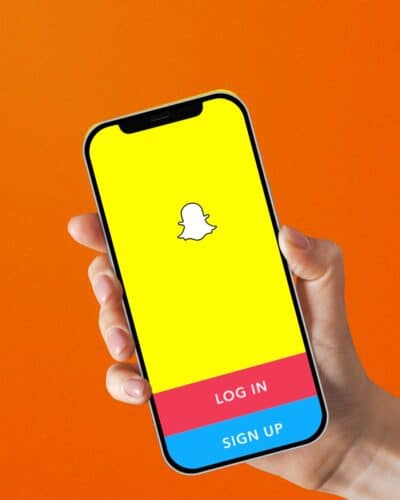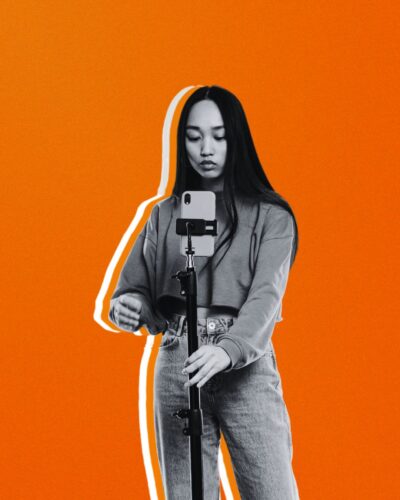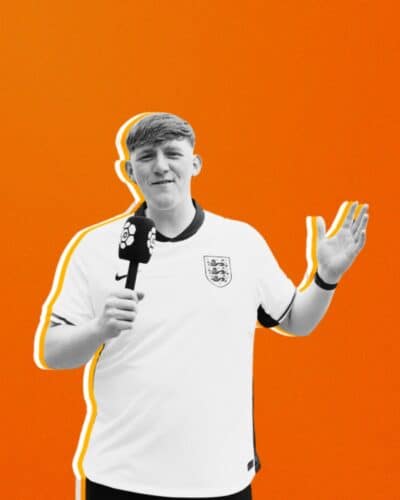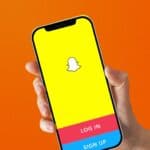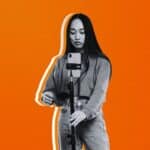Coachella is changing. In the lead up to this year’s festival, slow ticket sales and noticeably less festival-themed content on social media had many worried that it could be losing its grip on pop culture.
But as Coachella wraps up, the headlines paint a picture of free-spirited festivities, celebrities enjoying themselves, and scaled back influencer collaborations.
So, what happened at Coachella 2024 to swing the narrative?
Let’s find out.
Contents
How Coachella became a cultural phenomenon
The Influencer Olympics; How influencer marketing revolutionized Coachella
Has Coachella become less about music, more about social media?
Some of the best brand and influencer activations at Coachella 2024
Why was Coachella 2024 different and what brands can learn?
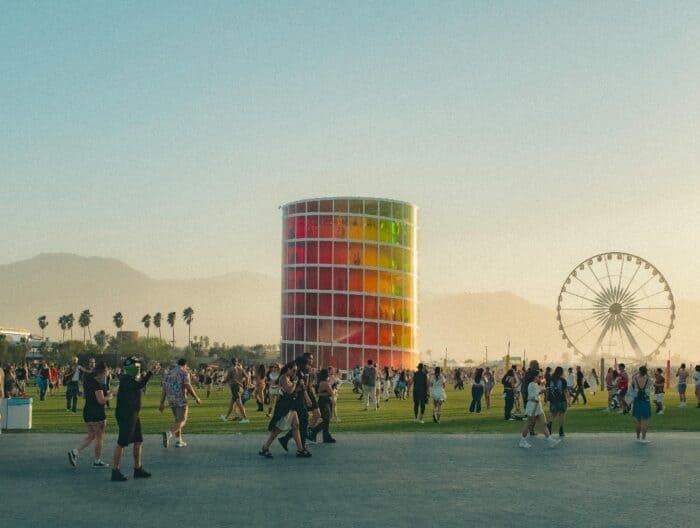
How Coachella became a cultural phenomenon
The history of influencers and Coachella intertwines with the rise of social media and the transformation of music festivals into cultural phenomena. Coachella Valley Music and Arts Festival, commonly referred to as Coachella, stands out as the most prominent, attracting festival goers and brands from all corners of the world.
In its early years, the festival primarily attracted music enthusiasts and industry professionals. However, with the advent of social media platforms, Coachella began to gain significant attention beyond the music itself. Influencers played a crucial role in this transformation.
As social platforms increasingly took over our attention spans during the 2010s, influencers started attending Coachella and sharing their experiences with followers. They posted photos and videos showcasing their festival outfits, the performances they attended, and the overall atmosphere of the event. These posts generated a considerable amount of buzz and contributed to Coachella’s growing reputation as a cultural event where fashion, music, and celebrity converge.
The Influencer Olympics; How influencer marketing revolutionized Coachella
Over the years, Coachella has become not only a music festival but also a hub for influencer marketing and brand activations. Companies recognize the opportunity to reach a highly engaged audience through influencer partnerships and experiential marketing at the festival. As a result, Coachella has become synonymous with influencer culture, with many influencers and celebrities attending the event each year and sharing their experiences across their respective channels.
Social media also had a major impact on Coachella’s growth. Influencer culture and “festival fashion” is now synonymous with the event. As content creators and celebrities began attending Coachella in droves, what they wore nearly overshadowed what was happening on stage. High School Musical actress, Vanessa Hudgens has been crowned “The Queen of Coachella”, the Kardashians are regulars, and there’s even been plenty of influencer drama taking place at the festival (see James Charles’s list of controversies).
Brands began leveraging Coachella as a pivotal part of their business strategies as early as 2015. Among the first were fashion outlet H&M, who partnered with Coachella organizers to launch #HMLovesCoachella, a clothing collection that captured the boho (free-spirited) aesthetic the festival is known for. H&M also hosted a pop-up shop at the 2016 festival where attendees could purchase the clothes on-site.
Fast forward eight years, Coachella is now one of the key dates in brand marketers calendars, up there with the Super Bowl, Black Friday and Fashion Week season (oh and let’s not forget Yorkshire Pudding Day). Last year, talent management agency Flourish coined Coachella “the influencer Olympics,” which isn’t a million miles away. Each year the festival attracts more influencers, brands too, who are all competing for the spotlight and to capture the most epic festival content.
If you’re active on social media during April, I’d be amazed if you managed to avoid Coachella content. Even if you’re not following an influencer who’s heading over to Indio, you’re likely to see a brand hosting a bunch of creators at tentpole events or sponsoring their trips. In fact, Coachella has become so popular that, most notably last year, influencers had faked their Coachella attendance by posing for Instagram shots in desert-situated Airbnb’s.
Has Coachella become less about music, more about social media?
Influencer marketing has had a monumental impact on the music festival, so much so that the focus has shifted largely towards influence, and away from the music.
Last year, TIME Magazine labeled Coachella as the “IT place to be for influencers”, a nod to the sheer number of content creators who announced their attendance at last year’s event via their Instagram handles. When you think about it, how much of the Coachella-themed content you see across social media (outside of the official festival pages) relates to the artists performing? What you’re more likely to see is influencers showing what they’re going to wear, the beauty products they’re taking with them, and which brands are paying for their trips.
As the festival became more of a social media marketing event, some festival-goers complained that it was now less fun. The way in which brands and influencers flooded the market had taken away from the hedonistic spirit Coachella once was admired for. The results seemed to support this, with CBS News reporting the slowest ticket sales in decades.
But then 2024 Coachella happened…
Coachella’s 2024 Resurgence
Just when people thought Coachella was losing momentum, the festival bounced back for all the right reasons. Celebrities turned up, acted weird, and actually appeared to have fun (Glamour, 2024).
In what was either a genius marketing ploy or spontaneous date night, Taylor Swift and Travis Kelce delighted fans with a very loved-up appearance at Ice Spice’s set (only feet away from Justin and Hailey Bieber). Shakira showed up and dropped a world tour announcement, and Kid Cudi jumped off stage and broke his foot – not that we’re pleased to hear about his injury.
Coachella 2024 took a lot of people by surprise. The stories that broke were subtly imperfect, things got a bit weird, things went wrong, but there was a growing sense among all that attended, that Coachella was becoming cool again. It seemed to be going back to the “good old” days when you could end up finding yourself next to the world’s biggest superstar in the crowd, without it feeling forced or fake.
Even brand and influencer partnerships felt different. There seemed to be less of the GRWM style content, although it was still present, than in previous years. A lot of influencers ditched the pristine, brushed up photos for a more authentic experience.
Some of the best brand and influencer activations at Coachella 2024
Rhode Photo Booth
Take a pic, get a free lip tint.
That’s as simple as it got at Rhode’s 2024 Coachella pop-up. Festival goers simply had to turn up, select their choice of lip tint, pose for a snap, and off they went.
Each year, brands have attempted to upstage their previous efforts, often creating their micro events within the main festival. But sometimes adding more bells and whistles to your activation isn’t always what festival-goers want. Sometimes, reverting back to basics is all you need.
Having attended Coachella, and all its exclusive micro brand events, for years, there’s no doubt Hailey Bieber knew what she was doing. Amidst all the chaos, she identified an opportunity for something simple, something that would truly resonate with her target audience without having an invite-only guest list, or building a giant eye-sore in the middle of the desert.
Poppi x Alix Earle
Poppi drinks teamed up with Alix Earle, creating the “Poppi House,” a fully immersive experience drenched in the brand’s signature lemon-lime aesthetic.
Spearheading the launch was Earle, the social media star who had recently become an exclusive partner for the brand. Earle was seen sipping on Poppi drinks throughout the event, even coining the term “CoachEARLEa” to describe her Poppi-fueled Coachella experience.
Going all in on Earle paid off for Poppi, in the form of viral TikTok content and UGC generated across social by Earle’s flock of followers, and influencers showing their love for the collab.
Brands typically go for a stable-load of influencers when activating at Coachella, which in previous years had led people to believe that there are too many creators at the festival. By working with one brand ambassador, Poppi proved how fruitful it can be to scale back the number of collaborators, instead leveraging Earle’s charisma and enthusiasm to “make Poppi the must-have beverage of Coachella” , said founder Allison Ellsworth.
YouTube
The video streaming platform’s relationship with Coachella continues to strengthen. Millions tune in to the festival via livestreams on YouTube each year, and to raise the profile of their offering, YouTube launched #CoachellaOnYouTube.
YouTube enlisted a boatload of TikTokers for this campaign, from all different niches and walks of life. The mission: to showcase the Coachella experience through the eyes of different creators, showing how the festival has something to offer no matter who you are, or the challenges you face, all accessible within YouTube.
YouTube invited deaf creator Chrissy Marshall to check out the festival’s accessibility, and how she experiences the festivities. Lisa Nguyen and Yuyi Chua delivered the best food spots at Coachella, whilst reminding followers to tune into the action live on YouTube. It wasn’t all about being at the festival either, creators like Asher Lara were brought in to encourage people to tune in on YouTube, from wherever they were.
The Coachella on YouTube campaign was all about sharing unique experiences through the eyes of creators, and encouraging people to create their own experiences by tuning into the festivities live on YouTube.
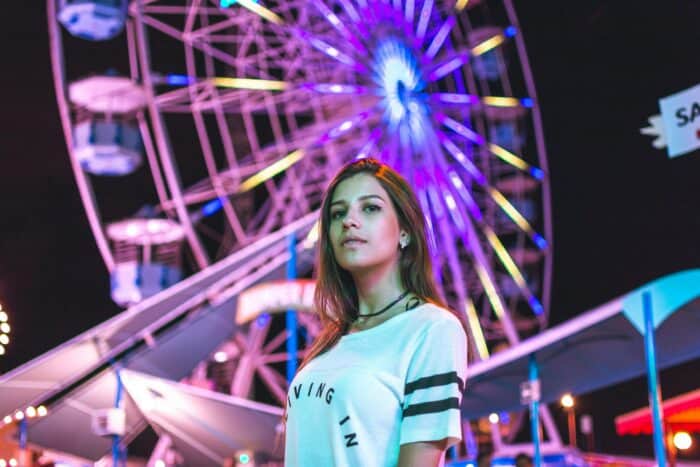
Why was Coachella 2024 different and what brands can learn?
Despite many predicting a decline in brand activity, and overall interest in Coachella this year, this narrative was flipped on its head completely. But why?
There has been a changing of the guard. Brands took a different approach this year by putting TikTok and Gen Z at the top of their watchlist.
TikTok was the priority for fashion brand Guess, whose compound featured a TikTok House with stars like Madeline Argy and Olivia Neill in attendance. YouTube used TikTok over its own platform to reach its audience, as did Revolve clothing. The emphasis on TikTok content this year was heavy, which sends a poignant message: Coachella is now for Gen Zers, sorry Millennials.
While it’s not a complete Gen Z makeover, the signs are there that the festival is starting to cater to younger demographics. On stage, you’ve got Gen Z favorites Ice Spice, Renee Rapp, and Doja Cat, and TikTok creators like Alix Earle are stealing the show ahead of more omnipresent talent.
Tips for brands looking forward
Coachella 2024 is a wrap. Is it too early to start planning for 2025? Not if you want to stay ahead of the curve. Looking at what happened this year, here are some tips for brands looking to collaborate with influencers next year:
Don’t be afraid to scale back
Hailey Bieber wore a white tank top and blue denim jeans to Coachella 2023, scaling back from high-end tailored outfits in previous years. Perhaps this should have been a sign of things to come, as her skincare brand took on Coachella with a simplistic photo booth pop-up this year. Rhode has been the talk of TikTok for its no-frills approach, which should encourage brands to think before they send influencers on all-expenses covered, private jet flights to the festival.
Dance to the tune of Gen Z
Gen Z took center stage this year, perhaps for the first time, as brands leaned heavily on TikTok and its creators to deliver their campaigns. Next year, it’s going to be about how you engage Gen Z. Who are the new and exciting creators that dance to the tune of Gen Z, and what can you do as a brand that is outside of the box to cut through the noise.
Think about the consumer experience
Coachella turned a corner this year. Festival-goers actually looked like they were there to have fun, say what you want about Taylor Swift wearing a New Heights podcast hat, and her new album drop, she was there to have fun. The brands with the best experiences this year focused on creating a unique experience for their audiences, making it less about the brand, and more about tapping into the festival spirit that had been abandoned for a number of years. Looking ahead to next year, brands should look at how they can show up whilst still capturing that festival magic.
Create a strategic influencer activation
Influencers still play a big role at the festival, and despite the talk of “influencer Olympics”, this isn’t going to change anytime soon. However, it’s important that brands use influencers more strategically. It’s no longer enough just to send a few influencers to the festival, you’ll need to think bigger.
—
Get in touch with Goat if you’d like to discuss your upcoming festival activations, or check out our previous article on how to smash your festival marketing.
